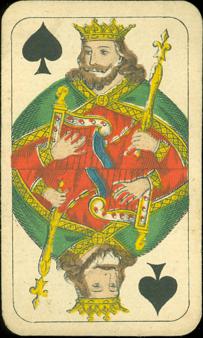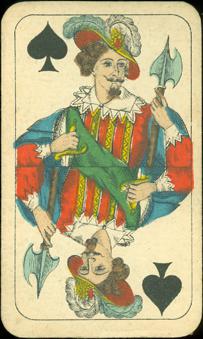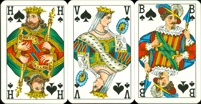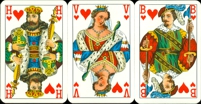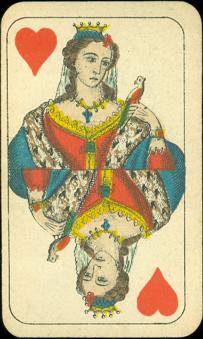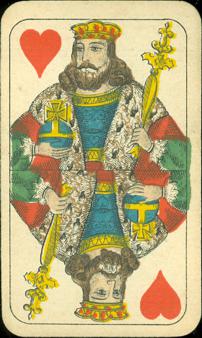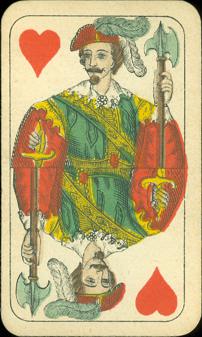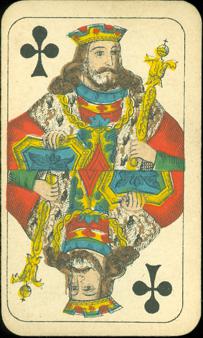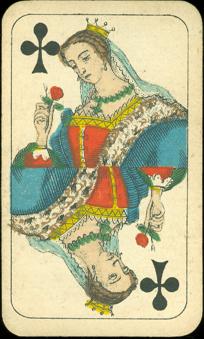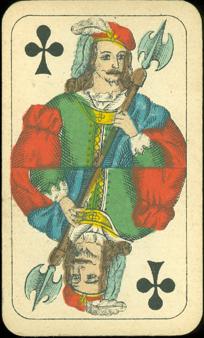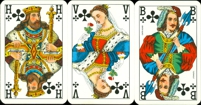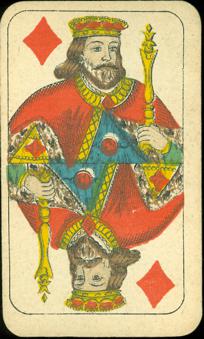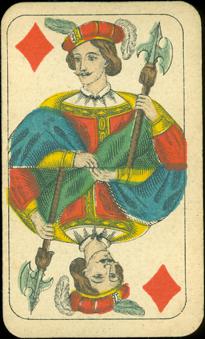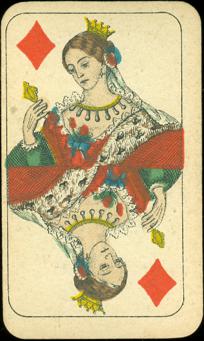October 2014
|
It was a
good month for our collection. We brought home quite a good number of
decks for it, so the short list was quite long at first. Two modern
decks by the American artist Chet Phillips, with a catchy style of
drawing humanized animals, lasted until the end in our monthly
competition, as well as two vintage
French advertising decks with lovely non-standard designs. But we chose
a standard pattern! |
|
 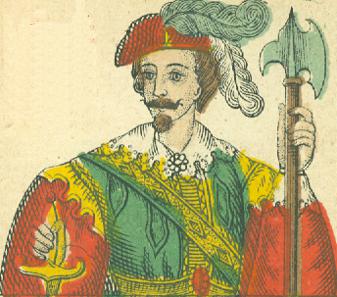
|
|
The two
figures above will look very familiar for the Dutch card players and
probably for Belgians as well. They belong to a pattern that is known as
the Dutch pattern, even though no Dutch playing card manufacturer has
ever produced this pattern. It was exported by Belgian manufacturers to
Holland, since the first quarter of the 20th century in large numbers. We usually try to avoid to show
standard patterns here, but for this
deck we'll make an exception. Although we're not particularly fond of
this pattern, it is something that we both grew up with. So we may have
become bored with the pattern itself, since a few
years we've become more and more interested to find a path back to the
origin of the pattern and we have begun buying the older and antique
ones whenever we found a deck that we could afford. So there was a good reason to bring this one home. |
We found it at the latest meeting of the
Dutch collectors in Nieuwerbrug on the 19th. The first thing
we noticed were the odd dimensions of the cards. They measure 50
x 85 mm. In size quite similar to the cards that carry the
Liegois pattern, such as the "cartes marbrées". The cards don't have indices or
numbers, so we suspected that they had some age. What surprised us was that
-notwithstanding the odd size- the courts looked so familiar for such an old deck. Not
only the designs but also the color scheme is very close to that of the present
Dutch pattern, produced for the Dutch market by Carta Mundi, as shown in the
small pictures here below.
At first we
couldn't find any images or info about this deck. It wasn't in Luc Biebouw's
elaborate book about Belgian playing cards, which was published earlier this year and we
couldn't find it in other books about Belgian cards either. In such a case it's
good to know Filip Cremers. He pointed out that we had overlooked it, as it was
described in a book that we have, "Turnhoutse Speelkaarten", written
in 1983 by Dr. E. van Autenboer and co-author....... Filip Cremers.
The deck was
printed by Brépols & Dierckx Zoon from Turnhout and published as "Cartes
Flamandes". In the book it's dated quite exactly as 24 November 1903. The decks were
sold in a paper wrapper.
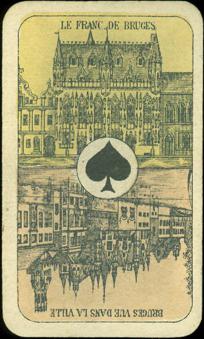
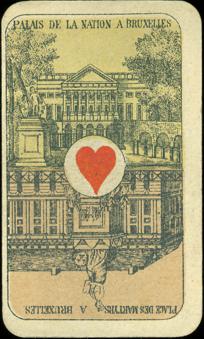
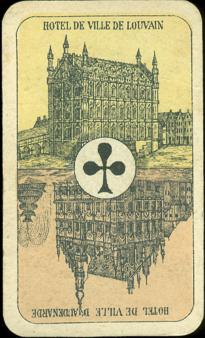
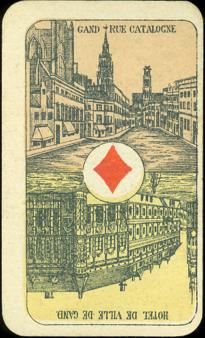
The aces
show scenes from Brugge, Gent, Brussel, Leuven en Oudenaarde. Although these cities are situated in the Flemish part of Belgium, their names as well
as the descriptions of all the scenes are in French: Bruges, Gand, Bruxelles, Louvain and d'Audenarde. Obviously the deck was
meant to serve the players in the Walloon part of Belgium, hence the French name
of the deck too: "Cartes Flamandes" (Flemish Cards). We don't
think that the pattern had a special name at that time, but that the name was
derived from the aces that it came with. Here Flemish scenes, so "Cartes
Flamandes" as name on the wrapper.
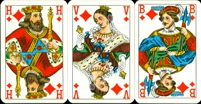 |
The deck consists
of 52 cards. No joker was ever published. It was printed on a sturdy, thick card, so the complete deck
is rather thick
too. |
|
|
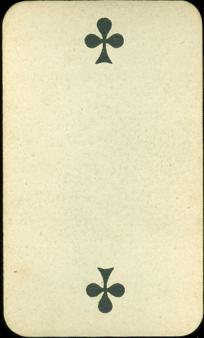 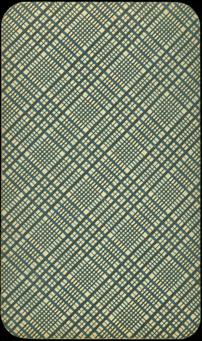
|
We
appreciate the deck because it is one more to enlighten the path to
the origin of this pattern. We already have some other early, antique
examples in our collection. Hopefully one day we'll have gathered
enough decks to illustrate a history of the pattern -from its origin
to its evolution into the "Dutch" pattern as we know it- in
a comprehensive article and separate xpo. |
|
|
BACK TO PRESENT MONTH


